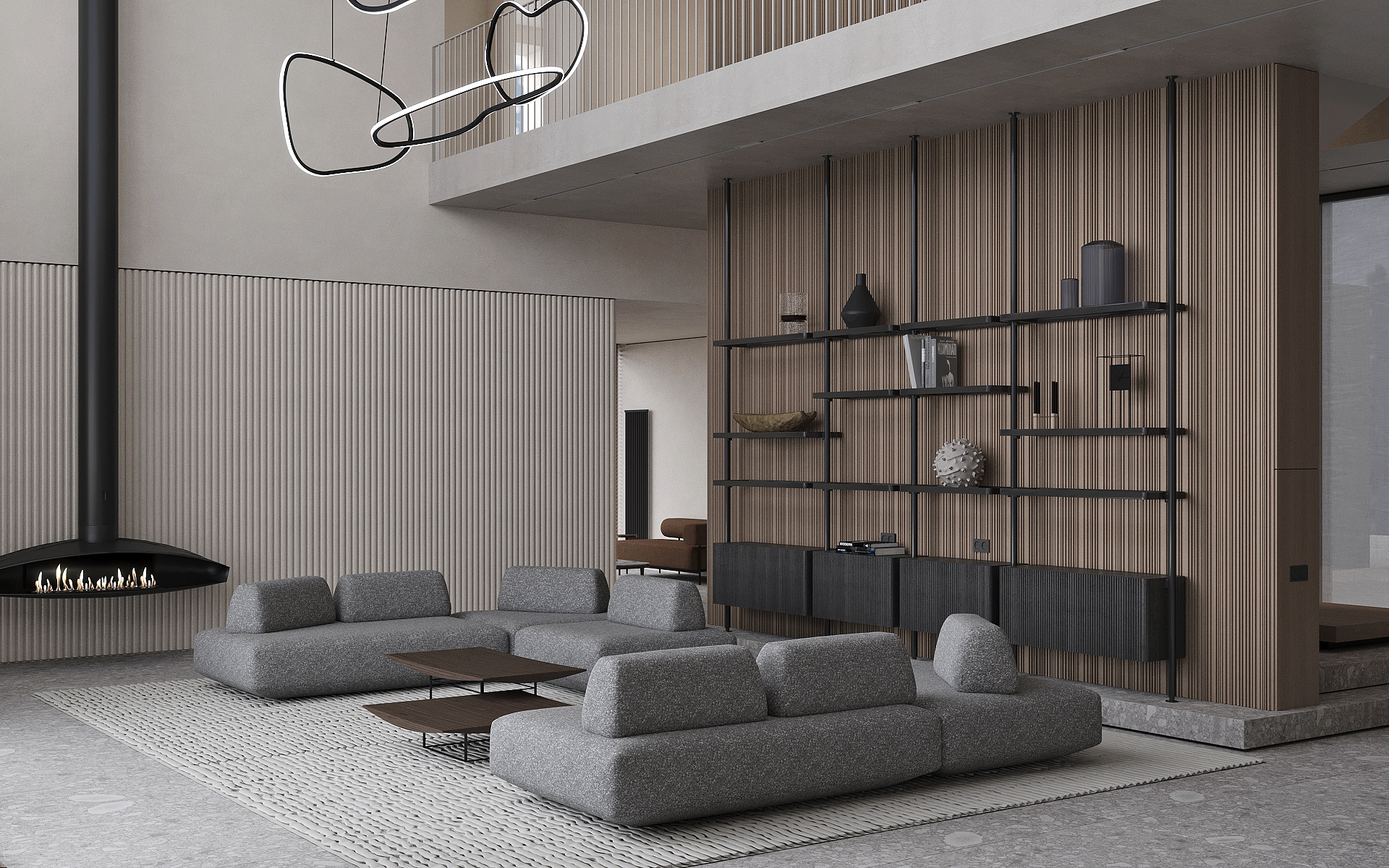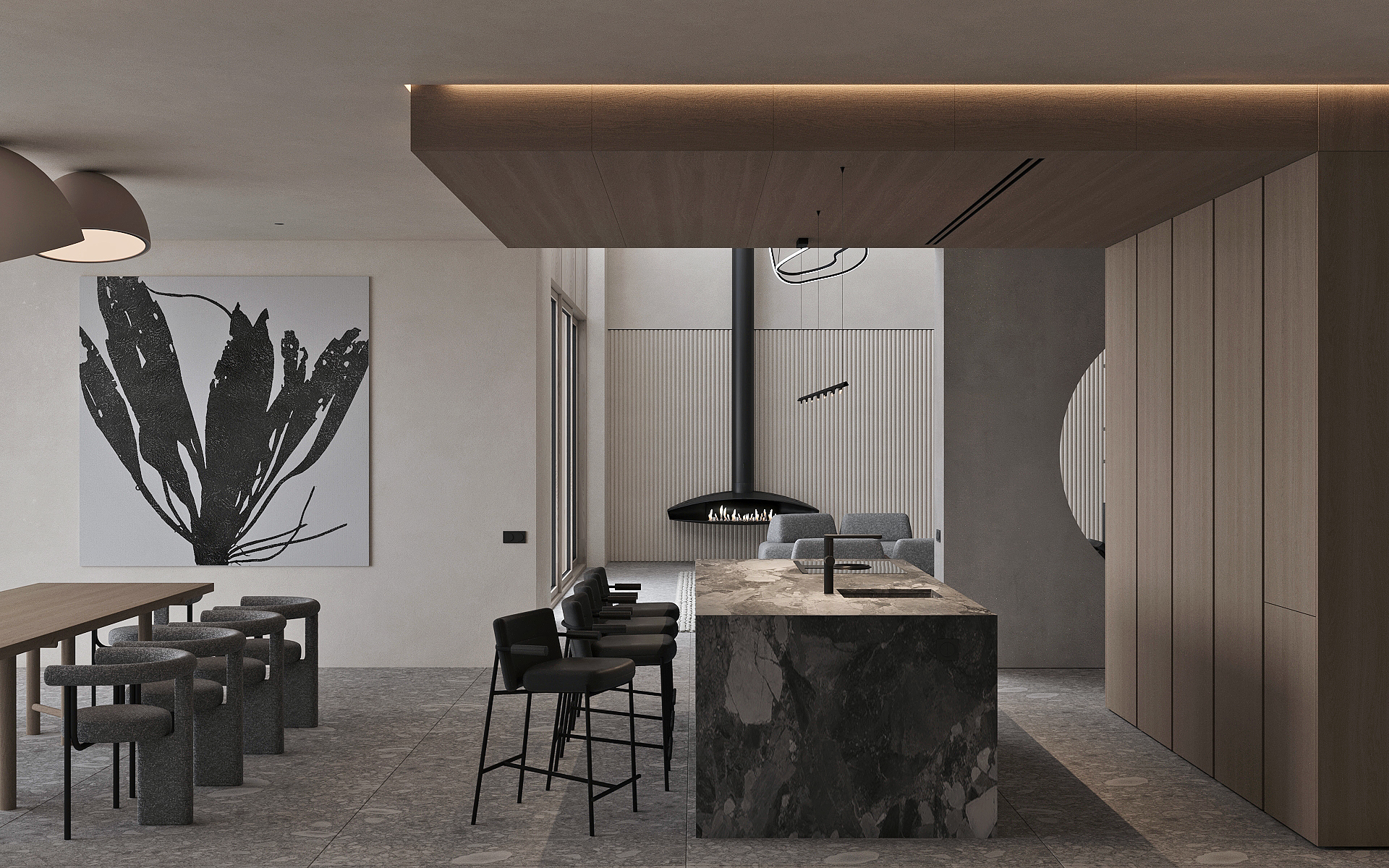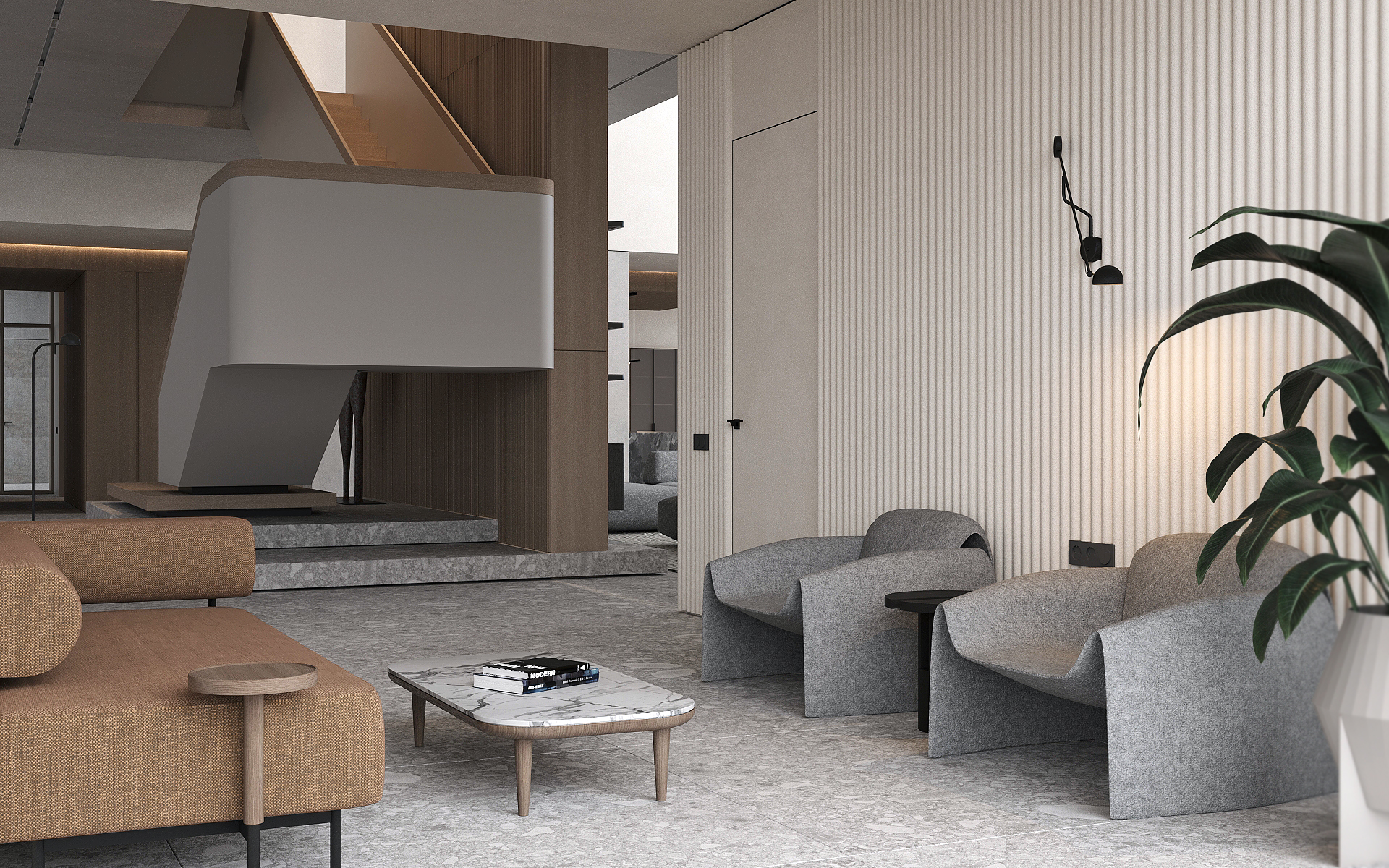The interior of the house as an example of
“transparent architecture”.
The interior displays an open layout, which is the basis of transparent architecture. The absence of partitions between living areas allows you to create a feeling of space and freedom of movement. Large windows occupy almost the entire wall, providing natural light and an unobstructed view, connecting the interior environment with the exterior. The space is organized in such a way that each functional zone flows smoothly into one another. For example, the living area with upholstered furniture smoothly transitions into the kitchen and dining room, which allows you to create a single integrated system for everyday life. The interior reflects modern minimalism, where every element has its place and purpose. Linear forms and clean surfaces emphasize the absence of unnecessary details, which helps to focus on the main thing – comfort and functionality of the space.
Harmony of materials and colors.
The use of natural materials, such as wood and stone, creates an organic connection between the interior and the exterior. The color palette of the interior is made in neutral tones, which adds a feeling of lightness and peace, promoting a harmonious interaction with the environment.
Interaction with the environment.
Large windows create the impression of direct contact with the environment, blurring the boundaries between indoor and outdoor space. This enhances the feeling of openness and inclusion in the natural landscape. This interior is a perfect embodiment of the concept of “transparent architecture”, which aims to create open, bright and functional spaces, where every element contributes to the harmonious interaction of a person with his environment.























